Related Research Articles

The Battle of Wilson's Creek, also known as the Battle of Oak Hills, was the first major battle of the Trans-Mississippi Theater of the American Civil War. It was fought on August 10, 1861, near Springfield, Missouri. Missouri was officially a neutral state, but its governor, Claiborne Fox Jackson, supported the South and secretly collaborated with Confederate troops.
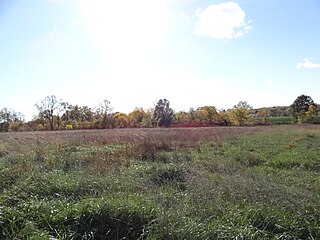
The Battle of Marais des Cygnes took place on October 25, 1864, in Linn County, Kansas, during Price's Missouri Raid in the American Civil War. It is also known as the Battle of Trading Post. In late 1864, Confederate Major General Sterling Price invaded the state of Missouri with a cavalry force, attempting to draw Union troops away from the primary theaters of fighting further east. After several victories early in the campaign, Price's Confederate troops were defeated at the Battle of Westport on October 23 near Kansas City, Missouri. The Confederates then withdrew into Kansas, camping along the banks of the Marais des Cygnes River on the night of October 24. Union cavalry pursuers under Brigadier General John B. Sanborn skirmished with Price's rearguard that night, but disengaged without participating in heavy combat.

The Battle of Mine Creek, also known as the Battle of the Osage, was fought on October 25, 1864, in Linn County, Kansas as part of Price's Missouri Expedition during the American Civil War. Major General Sterling Price of the Confederate States Army had begun an expedition in September 1864 to restore Confederate control of Missouri. After being defeated at the Battle of Westport near Kansas City, Missouri on October 23, Price's army began to retreat south through Kansas. Early on October 25, Price's army was defeated at the Battle of Marais des Cygnes. After Marais des Cygnes, the Confederates fell back, but were stalled at the crossing of Mine Creek while a wagon train attempted to cross.
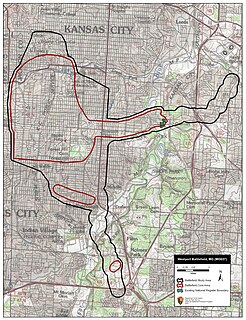
The Battle of Westport, sometimes referred to as the "Gettysburg of the West", was fought on October 23, 1864, in modern Kansas City, Missouri, during the American Civil War. Union forces under Major General Samuel R. Curtis decisively defeated an outnumbered Confederate force under Major General Sterling Price. This engagement was the turning point of Price's Missouri Expedition, forcing his army to retreat. The battle ended the last major Confederate offensive west of the Mississippi River, and for the remainder of the war the United States Army maintained solid control over most of Missouri. This battle was one of the largest to be fought west of the Mississippi River, with over 30,000 men engaged.
The Battle of Glasgow was fought on October 15, 1864, in and near Glasgow, Missouri, as part of Price's Missouri Expedition during the American Civil War. In late 1864, the Confederate leadership in the Trans-Mississippi Theater planned a campaign into the state of Missouri, in hopes of drawing Union troops from more important theaters east of the Mississippi River. Major General Sterling Price commanded the expedition, and initially hoped to capture St. Louis, although an early defeat at the Battle of Pilot Knob led him to abandon this plan. After the strength of the Union garrison at Jefferson City convinced Price to cancel a planned attempt to capture the place, he led his army into the pro-Confederate region of Little Dixie, where recruiting efforts were successful.

The Battle of Little Blue River was fought on October 21, 1864, as part of Price's Raid during the American Civil War. Major General Sterling Price of the Confederate States Army had led an army into Missouri in September 1864 with hopes of challenging Union control of the state. During the early stages of the campaign, Price abandoned his plan to capture St. Louis and later his secondary target of Jefferson City. The Confederates then began moving westwards, brushing aside Major General James G. Blunt's Union force in the Second Battle of Lexington on October 19. Two days later, Blunt left part of his command under the authority of Colonel Thomas Moonlight to hold the crossing of the Little Blue River, while the rest of his force fell back to Independence. On the morning of October 21, Confederate troops attacked Moonlight's line, and parts of Brigadier General John B. Clark Jr.'s brigade forced its way across the river. A series of attacks and counterattacks ensued, with neither side able to gain a significant advantage.
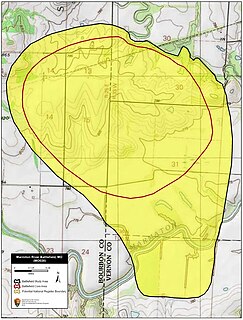
The Battle of Marmiton River, also known as Shiloh Creek or Charlot's Farm, occurred on October 25, 1864, in Vernon County, Missouri during the American Civil War. Major General Sterling Price of the Confederate States Army commenced an expedition into Missouri in September 1864, with hopes of challenging Union control of the state. After a defeat at the Battle of Westport on October 23, Price began to retreat south, and suffered a serious defeat at the Battle of Mine Creek early on October 25. The afternoon of the 25th, Price's wagon train became stalled at the crossing of the Marmaton River in western Missouri. A delaying force led by Brigadier General Joseph O. Shelby attempted to hold off Union cavalry commanded by Brigadier General John McNeil and Lieutenant Colonel Frederick W. Benteen. Shelby was unable to drive off the Union force, although fatigue of the Union cavalry's horses prevented close-quarters action. At nightfall, the Confederates disengaged and destroyed much of their wagon train. Price was again defeated on October 28 at the Second Battle of Newtonia, and the Confederate retreat continued until the survivors reached Texas in early December.
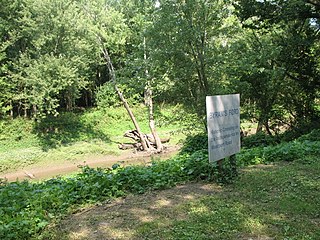
The Battle of Byram's Ford was fought on October 22 and 23, 1864, in Missouri during Price's Raid, a campaign of the American Civil War. With the Confederate States of America collapsing, Major General Sterling Price of the Confederate States Army conducted an invasion of the state of Missouri in late 1864. Union forces led Price to abandon goals of capturing the cities of St. Louis and Jefferson City, and he turned west with his army towards Kansas City.

Price's Missouri Expedition, also known as Price's Raid or Price's Missouri Raid, was an unsuccessful Confederate cavalry raid through Arkansas, Missouri, and Kansas in the Trans-Mississippi Theater of the American Civil War. Led by Confederate Major-General Sterling Price, the campaign's intention was to recapture Missouri and renew the Confederate initiative in the larger conflict.

The Army of Missouri was an independent military formation during the American Civil War within the Confederate States Army, created in the fall of 1864 under the command of Maj. Gen. Sterling Price to invade Missouri. Price's Raid was unsuccessful, and his army retreated to Arkansas, where it was broken up and absorbed into the Confederate Army of the Trans-Mississippi. After the war, Price, accompanied by his subordinate Brig. Gen. Jo Shelby and several members of his former command, relocated to Mexico where they unsuccessfully sought service with the Emperor Maximilian prior to returning to civilian life in the United States.

Charles Rainsford Jennison also known as "Doc" Jennison was a member of the anti-slavery faction during Bleeding Kansas, a famous Jayhawker, and a member of the Kansas State Senate in the 1870s. He later served as a Union colonel and as a leader of Jayhawker militias during the American Civil War.
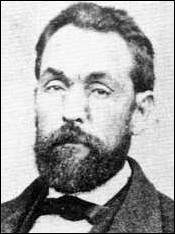
Sidney Drake Jackman was an American farmer, teacher, and soldier. He served as an officer in the Confederate Army during the American Civil War, most noted for his performance in the early part of the Battle of Westport in 1864.
James Hobart Ford was a Union colonel and brevet brigadier general during the American Civil War, notable for his contributions in the Trans-Mississippi Theater of the war.
Of the brigades listed below, only Philips' and Benteen's brigades, and a small part of Sanborn's brigade from the Union Army of the Border fought in the Battle of Mine Creek of the American Civil War. The Confederate order of battle is listed separately. The entire organization of the Army of the Border is shown.
During the Civil War, Coldwater Grove existed 13½ miles east of Paola, Kansas, in Miami County. It straddled the Kansas-Missouri border, being partly in both states. About June 1863 a Union military post was established on the Kansas side of the community and the post was put under the command of Lt. Col. Charles S. Clark. Clark also commanded four nearby posts.
Potosi's post, in eastern Linn County, Kansas, was established at the small town of Potosi, Kansas, founded in 1857 by those loyal to the southern cause in Kansas. The other side, the free-staters, soon gained control of the town and it was loyal to the Union when the Civil War broke out in 1861. Potosi was located along the north bank of Mine Creek and it was along the military road running from Fort Leavenworth to Fort Gibson. At its height the town had thirty residents, a store and a post office.
Paola's post, sometimes called Post Paola, in Miami County, Kansas, was located on the west side of Bull Creek, just west of Paola, Kansas. It was probably established in December 1861, as that was the first time it was mentioned. This post became one of the more important posts along the Kansas-Missouri border during the Civil War. It became a district headquarters in 1863. Later, in September 1864, it was designated a subdistrict headquarters, when the district headquarters was moved to Lawrence, Kansas. The military road from Fort Leavenworth to Fort Gibson ran through Paola, thus ensuring the post always had some importance.
In 1842 a large log fort was built at Trading Post by the United States Army, upon the order of Gen. Winfield Scott. This fort was on the Fort Leavenworth-Fort Gibson Military Road. The completed fort was fairly elaborate. It included space to house a company of dragoons and their horses. Also, it contained a hospital and store houses. Gaps along the outside walls of buildings were filled in with stockade walls. The buildings were built around a large interior open area.
Harris's Missouri Battery was an artillery battery that served in the Confederate States Army during the American Civil War. The battery was organized in early 1864 when the 13th Missouri Light Battery was reorganized in a process that may not have been officially approved; Captain Samuel Stanhope Harris commanded the new unit. The battery fought in the Camden Expedition in early 1864, seeing action in the Battle of Prairie D'Ane and the Battle of Poison Spring in April. In June, the battery was present at the Battle of Ditch Bayou. Harris's Battery accompanied Sterling Price during his raid into Missouri in late 1864, during which it fought at the battles of Pilot Knob, Glasgow, Little Blue River, Big Blue River, and Mine Creek, as well as several smaller skirmishes. At Mine Creek, the battery's cannons were captured. On May 26, 1865, the battery surrendered; the men of the battery were paroled.
Slayback's Missouri Cavalry Regiment was a cavalry regiment of the Confederate States Army during the American Civil War. Originally formed as Slayback's Missouri Cavalry Battalion, the unit consisted of men recruited in Missouri by Lieutenant Colonel Alonzo W. Slayback during Price's Raid in 1864. The battalion's first action was at the Battle of Pilot Knob on September 27; it later participated in actions at Sedalia, Lexington, and the Little Blue River. In October, the unit was used to find an alternate river crossing during the Battle of the Big Blue River. Later that month, Slayback's unit saw action at the battles of Westport, Marmiton River, and Second Newtonia. The battalion was briefly furloughed in Arkansas before rejoining Major General Sterling Price in Texas in December. Probably around February 1865, the battalion reached official regimental strength after more recruits joined.
References
- ↑ A Little History about Mound City, Kansas, and Our Neighbors (N.p.: n.d.), pp. 2, 6, 23.
- ↑ William C. Pollard, Jr., "Forts and Military Posts in Kansas: 1854-1865" (Ph.D. dissertation, Faith Baptist College and Seminary, 1997), p. 140.
- ↑ A Little History about Mound City, pp. 44-5.
- ↑ A Little History about Mound City, p. 23.
- ↑ Fred K, Schultz, "Marais des Cygnes River, Mo., eng. at," in Historical Times Illustrated Encyclopedia of the Civil War, first ed. (New York: Harper & Row, 1986), p. 474.
- ↑ A Little History about Mound City, p. 23.
- ↑ Lumer F. Buresh, October 25th and the Battle of Mine Creek (Kansas City: Lowell Press, 1977), pp. 160-1.
- ↑ Maj. Samuel B. Davis, report, War of the Rebellion (Washington: Government Printing Office, 1893), Series I, Vol. XLI, Part I, pp. 552-4.
- ↑ A Little History about Mound City, pp. 23, 44.
- ↑ Laura L. Lowe, "The Old School House," Mound City Progress, June 1, 1905, p. 2.
- ↑ A Little History about Mound City, pp. 44-5.
- ↑ Buresh, pp. 153-4.
- ↑ Kansas Asst. Adjutant-General Capt. John Pratt, report to Col. U. B. Pearsall, War of the Rebellion (Washington: Government Printing Office, 1896), Series I, Vol. XLVIII, Part II, p. 787.